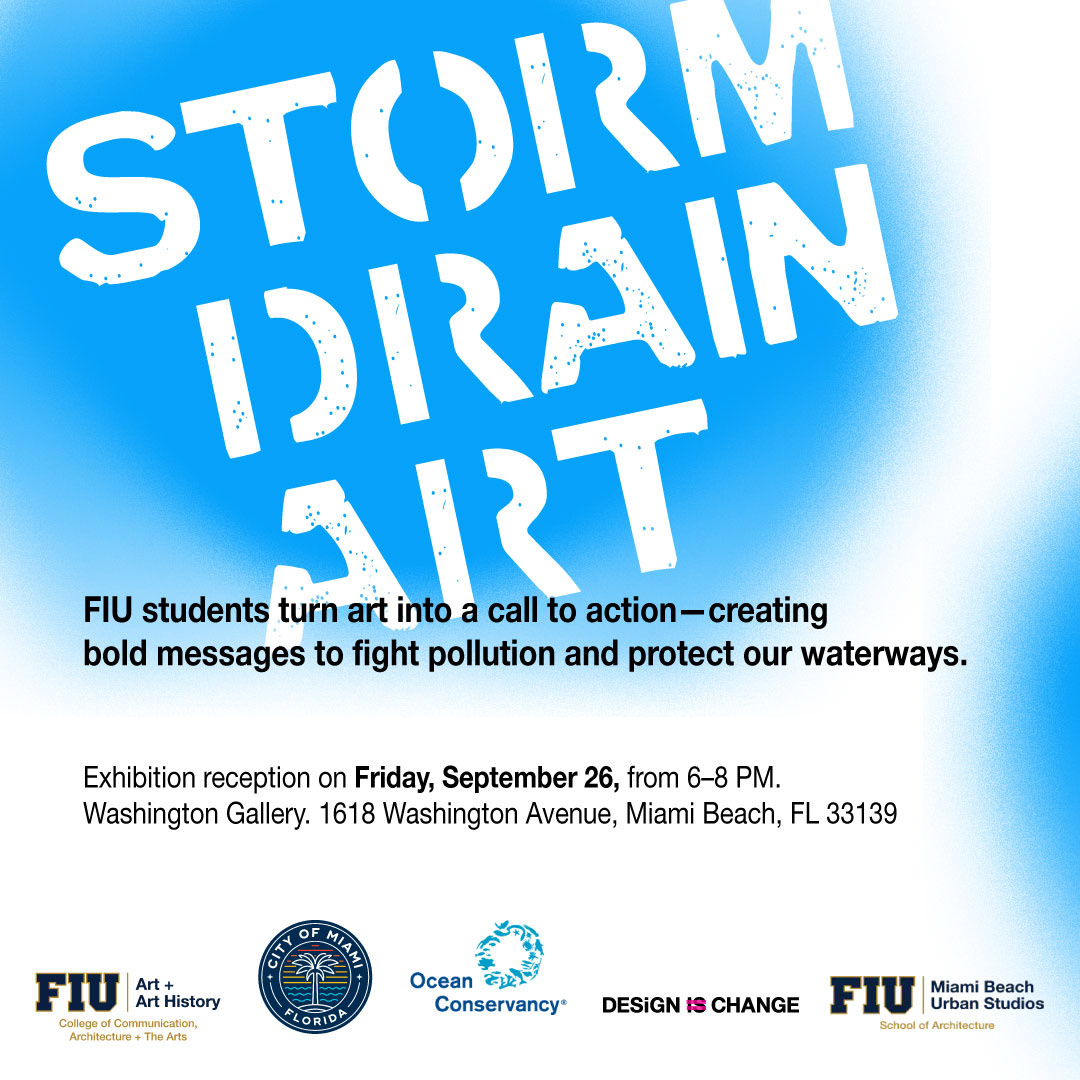2. Engagement/ creative and design process
Under the guidance of Professor Silvia Pease, students in the Design 3 course engaged in a structured and iterative creative process that integrated conceptual development with hands-on production. On April 1st and 3rd, during class sessions for Sections 1 and 2 respectively, students initiated the project by discussing conceptual ideas and translating them into visual forms through the creation of 24 x 24-inch stencil designs. These sessions emphasized critical thinking, peer feedback, and iterative refinement of visual language. By April 8th and 10th, students returned with finalized stencils prepared for spray application, marking the transition from ideation to material execution. During these sessions, both sections finalized their vector files and documented their creative process through photographs of both the stenciled artworks and their production stages. The culmination of the project occurred on April 15th and 17th, when students formally submitted their completed design applications to the City of Miami, aligning classroom practice with professional engagement in public art initiatives.
Florida International Students of BFA in graphic Design working on their stencils. April 2025. Design is change course.
City of Miami Planning Department, through its Public Art Division and the Office of Resilience and Sustainability, in partnership with Florida International University request qualifications from student artists and/or artist teams to create site-specific artwork(s) that provide a visually engaging experience while educating the public about the dangers of pollution in storm drains. The artwork will raise awareness and encourage efforts to prevent pollution, inspiring the community to take action toward protecting the environment.
Project Location: Citywide
Eligibility: This opportunity is open to student artists at Florida International University
who are 18 or older.
Submit to: Art in Public Places Division - AIPP@miamigov.com
For additional information contact: The Public Art Division at: AIPP@miamigov.com
Project Location: Citywide
Eligibility: This opportunity is open to student artists at Florida International University
who are 18 or older.
Submit to: Art in Public Places Division - AIPP@miamigov.com
For additional information contact: The Public Art Division at: AIPP@miamigov.com
Project Objective and Information:
This Call to Artists invites student artists from FIU to submit proposals for a public art initiative aimed at raising awareness about pollution in storm drains.
Each year, 11 million metric tons of plastic enter the ocean, adding to the 200 million metric tons already circulating. This pollution often starts with plastic waste, like bags and straws, entering gutters and storm drains, harming marine life and ecosystems.
The City of Miami welcomes a variety of proposals, and key opportunities for
consideration include:
• Art that raises awareness about the dangers of pollution in storm drains and
educates the public on environmental preservation
• Art that enhances public spaces while complementing and respecting the
surrounding built and natural environments
• Designs that are adaptable to stencil formats for easy application at multiple
storm drainage sites across the City
• Art that fosters a sense of community pride and encourages sustainable behavior
• Durable, safe, and low-maintenance designs suitable for outdoor public spaces.
Site Specific Public Art
• Illustration, designed to be scalable and transferable to a stencil for application via paint at storm drainage sites around the city.
This Call to Artists invites student artists from FIU to submit proposals for a public art initiative aimed at raising awareness about pollution in storm drains.
Each year, 11 million metric tons of plastic enter the ocean, adding to the 200 million metric tons already circulating. This pollution often starts with plastic waste, like bags and straws, entering gutters and storm drains, harming marine life and ecosystems.
The City of Miami welcomes a variety of proposals, and key opportunities for
consideration include:
• Art that raises awareness about the dangers of pollution in storm drains and
educates the public on environmental preservation
• Art that enhances public spaces while complementing and respecting the
surrounding built and natural environments
• Designs that are adaptable to stencil formats for easy application at multiple
storm drainage sites across the City
• Art that fosters a sense of community pride and encourages sustainable behavior
• Durable, safe, and low-maintenance designs suitable for outdoor public spaces.
Site Specific Public Art
• Illustration, designed to be scalable and transferable to a stencil for application via paint at storm drainage sites around the city.
Visitor Experience Strategy and takeaways:
Artwork will be placed near storm drains, fostering community responsibility toward sustainability for both current and future generations. Key audiences include, but are not limited to: CITY OF MIAMI RESIDENTS, TOURISTS, STUDENTS AND EDUCATIONAL GROUPS, ENVIRONMENTAL ORGANIZATIONS AND COMMUNITY GROUPS
Artwork will be placed near storm drains, fostering community responsibility toward sustainability for both current and future generations. Key audiences include, but are not limited to: CITY OF MIAMI RESIDENTS, TOURISTS, STUDENTS AND EDUCATIONAL GROUPS, ENVIRONMENTAL ORGANIZATIONS AND COMMUNITY GROUPS
This Call to Artists invites student artists from FIU to submit proposals for a public art initiative aimed at raising awareness about pollution in storm drains.
Each year, 11 million metric tons of plastic enter the ocean, adding to the 200 million metric tons already circulating. This pollution often starts with plastic waste, like bags and straws, entering gutters and storm drains, harming marine life and ecosystems.
Each year, 11 million metric tons of plastic enter the ocean, adding to the 200 million metric tons already circulating. This pollution often starts with plastic waste, like bags and straws, entering gutters and storm drains, harming marine life and ecosystems.

